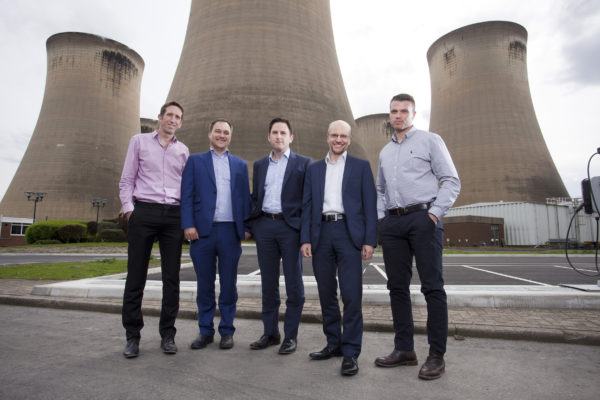Innovative technology from Leeds in UK carbon capture pilot

A spin-out from the School of Chemistry at the University of Leeds is being used in the first BECCS (bioenergy with carbon capture and storage) pilot project of its kind in the world.
C-Capture, developed by Professor Chris Rayner, is being used by Drax Power Station, the UK’s biggest renewable power generator, to capture carbon dioxide.
The demonstration plant at the power station, near Selby in North Yorkshire, is using the innovative technology, developed by C-Capture, to capture a tonne of CO2 a day during the pilot. It is the first-time carbon dioxide has been captured from the combustion of a 100% biomass feedstock.
If the BECCS pilot can be scaled up to deliver negative emissions, Drax Power Station would be helping to remove the gases that cause global warning from the atmosphere at the same time as electricity is produced.
Engineers began commissioning the pilot plant in November with the first carbon now being captured, proving that the proprietary solvent developed by C-Capture can be used to isolate the carbon dioxide from the flue gases released when biomass is used to generate electricity.
Data being obtained about the CO2 capture process will continue to be analysed throughout the pilot to fully understand the potential of the technology and how it could be scaled up at Drax. Part of this will include identifying and developing ways to store and use the carbon dioxide being captured.
The Royal Academy and Royal Society of Engineers have estimated that BECCS could enable 50 million tonnes of carbon dioxide to be captured by Drax per year by 2050 – approximately half the nation’s emissions target.
Chris Rayner, founder of C-Capture and Professor of Organic Chemistry at the University of Leeds, said: “This represents a major milestone on the road to achieving negative emissions through BECCS, which is going to be so important in the future. To see our technology working in a real environment like Drax is a tribute to the fantastic team of chemists and engineers who work on the project.”
Caspar Schoolderman, Director of Engineering at C-Capture added: “Working at this scale is really where the engineering gets interesting. The challenge now is to get all the information we need to design and build a capture plant 10,000 times bigger. It’s only really when we get to those sorts of scales that we can start to have an impact on the climate.”
See this animation explainer of the BECCS process and this video of how C-Capture works.
The pilot has generated substantial media interest, with coverage on BBC News (08.02.19), Yorkshire Post, Business Desk , MarketScreener, Financial Times and The Times
Image (L-R): Jason Shipstone, Head of R&D, Drax Group; Caspar Schoolderman, Director of Engineering, C-Capture Ltd; Andy Koss, CEO Drax Power; Prof Christopher Rayner, Technical Director, C-Capture Ltd; Carl Clayton, Research and Innovation Engineer, Drax Group (credit: Drax)
